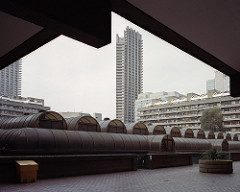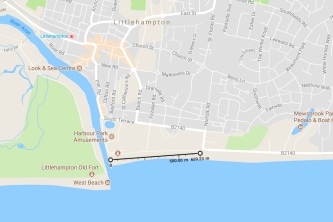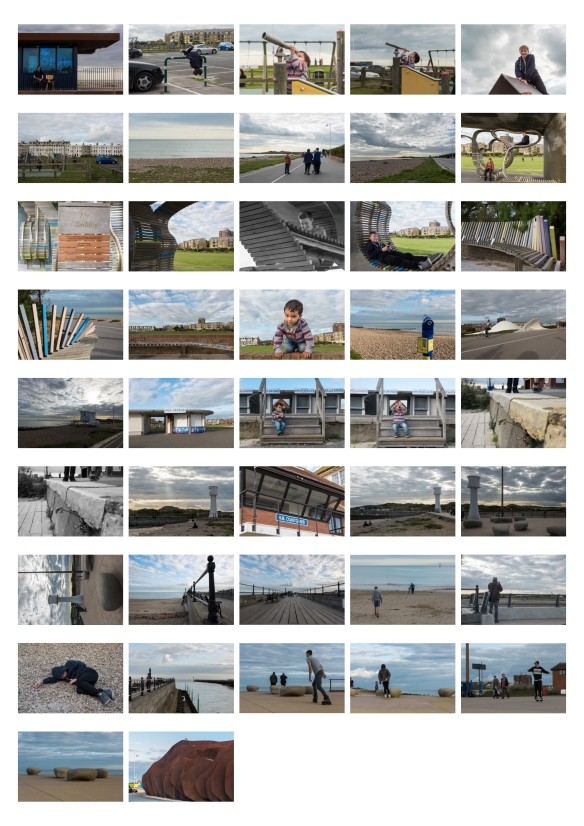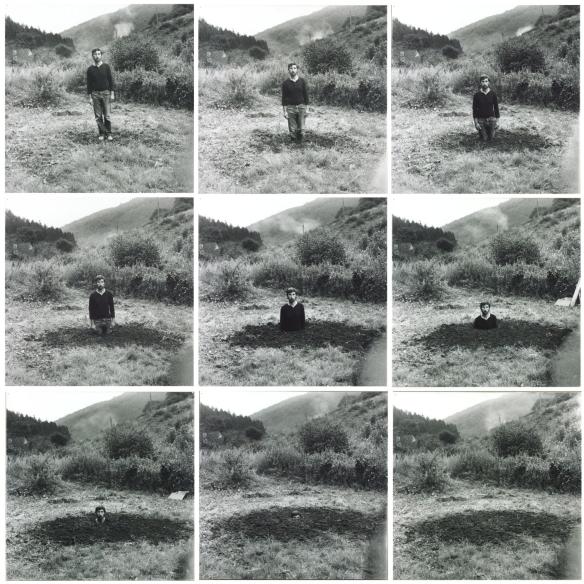Assignement 1 – Research posts
more research:
When you look at the buildings and spaces that surround your neighborhood, do you ever feel compelled to photograph and immortalize the scene, or do you see just another mundane landscape? For British photographer Tom Westbury, anything and everything has the potential to become a valid, interesting photograph.
What Places Tell Us About People
 Really like this photographers work, he is using film, after constantly trying to make digital files look like film. Something I do quite a lot!
Really like this photographers work, he is using film, after constantly trying to make digital files look like film. Something I do quite a lot!
This particular photo called untitled, City of London, 2017 caught my eye for it’s composition and framing. However, whilst they are great shots, I’m not sure they show connection between the him and the environment.
This type of photography is called “New Topgraphics”,
New topographics was a term coined by William Jenkins in 1975 to describe a group of American photographers (such as Robert Adams and Lewis Baltz) whose pictures had a similar banal aesthetic, in that they were formal, mostly black and white prints of the urban landscape. Bernd Becher and Hilla Becher. Pitheads 1974.
I also wanted to research more about National Geographic. Having watched a few on-line lectures from National Geographic photographers, I remember that many of them talk about the first photo in a series, being the ‘sense of place’ photo. I wanted to see if this concept would be something that I should incorporate into this set of photos
Having thought about which ‘square mile‘ I would like to use, my first attempt at answering this is based on Littlehampton promenade. I don’t have any connection with my own childhood, but it does with my children, step children and grandchildren and so I thought that maybe this is somewhere that we would all have memories of.

This particular stretch of promenade has changed enormously over the years and especially in the past 5 years, when the whole river side defences have been rebuilt. I am interested in how people use the space, i.e. for a Sunday stroll, walk the dog, a playground and as this assignment is about childhood interaction with surroundings, I thought I might focus particularly how children use this space.
This set of photos were taken on a surprisingly warm and bright October Sunday afternoon. With me were three of step children ranging in age from 16 – 14 and my sister and her two year old. So this gave me an opportunity to watch how the different ages interacted with different spaces and objects. Arun District council have spent quite a lot of money over the last few years installing art objects and community spaces therefore this small stretch of prom has a lot of things packed into it t o do.
o do.
There is allegedly ‘the worlds longest bench’, an outdoor stage, a play park, and coffee shop designed by an award winning designer (affectionately known locally as ‘the rusty turd’!)
Having watched quite a few talks by National Geographic photographers, they always talk about the first shot being a ‘sense of place’ so I tried to take shots that might do that alongside the shots of the children interacting with objects they encountered.
I decided to use f/8 for all of the shots, as I felt I needed to keep both the foreground and background in focus because this is essentially about location and a connection with it. I kept the ISO at 200 as it was a fairly bright day but changed the focal length between 24 – 70 depending on the shot.
If I use these for the assignment, I think I will need to find a balance between showing ‘the place’ and how people interact with it. I’m not sure if I should go back at different times of day or in different weather to show the changing nature of the area or if that’s too much bearing in mind I have to choose only 6 – 12 photos?
. . . . . . . . .
further reflection, I am pleased that these photos could convey connection with the environment, but not that they have an impact on a person’s identity
Brief
In our earliest years we know a patch of ground in a detail we will
never know anywhere again – site of discovery and putting names to
things – people and places – working with difference and similitude
– favourite places, places to avoid – neighbours and their habits,
gestures and stories – textures, smells – also of play, imagination,
experiment – finding the best location for doing things – creating
worlds under our own control, fantasy landscapes.
(Professor Mike Pearson)
The brief is about Y Filltir Sgwar (The Square Mile) and the concept that people form an intimate connection between their childhood ‘home’ surroundings which is stronger than any other they’ll ever have. I think the author is saying that these bonds can take on fantasy proportions.
I need to make a series of 6 – 12 photographs that examine my surroundings in a new and experimental way. Y Filltir Sgwar is the starting point, but it asks you to consider where this concept might take you and there is no direction in terms of content. Architecture, landscape or people could be the focus. It should also try to communicate something about me, my interests and motivations, a kind on introduction.
initial thoughts:
- I don’t live anywhere near where I was brought up, so can’t revisit places I knew as a kid.
- I live in a pretty normal suburban housing estate, which I don’t have a great connection to. I mostly drive in and out of the estate, I don’t really know it that well and am not really inspired to get to know it.
- There are other local places I am more connected to, should I focus on one of those
research
In starting to consider this concept I have looked at the photographers suggested by the course book: I have annotated my thoughts under each one:
- Keith Arnatt: http://www.tate.org.uk/art/artists/keith-arnatt-666
- Self Burial:Arnatt was fascinated with works of art that are created in the natural landscape but leave no trace of their presence behind. ‘The continual reference to the disappearance of the art object suggested to me the eventual disappearance of the artist himself’, he wrote. This sequence of photographs was broadcast on German television in October 1969. One photo was shown each day, for about two seconds, sometimes interrupting whatever programme was being shown at peak viewing time. They were neither announced nor explained – viewers had to make what sense of them they could. Gallery label, April 2009

Self Burial: Keith Arnatt
- like a when you throw a stone into the water, there’s a ripple and then it’s gone leaving no trace, perhaphs? does art change the world can we really leave a legacy?
- Self Burial:Arnatt was fascinated with works of art that are created in the natural landscape but leave no trace of their presence behind. ‘The continual reference to the disappearance of the art object suggested to me the eventual disappearance of the artist himself’, he wrote. This sequence of photographs was broadcast on German television in October 1969. One photo was shown each day, for about two seconds, sometimes interrupting whatever programme was being shown at peak viewing time. They were neither announced nor explained – viewers had to make what sense of them they could. Gallery label, April 2009
- Gawain Barnard: http://gawainbarnard.com/
- In boredom to burn, the authors photos, seem to be reminiscing about his desire to burn things as a child. These seem very dark and ominous and which may be a reflection on his thoughts about his home town. Not really a style I’d like to emulate.
- Tina Barney: www.artic.edu/aic/exhibitions/story/barney.html
- These photos seem to more about social comment than a sense of place, they also seem to highlight relationships
- Venetia Dearden: www.venetiadearden.com/en/somerset_stories_fivepenny_dreams.
html- Really like the artistry of this photographer, she uses great light, quite a lot of back lit photos and lots of black and white. Photos have a filmic quality. Feel warm and nostalgic, focuses on good things happening in these places. I like this kind of photography alot.
Somerset Stories Fivepenny Dreams
‘My passion and curiosity for Somerset has been fuelled by my long-term connection with this area where I spent my childhood. I am compelled to return again and again to explore my relationship with the landscape and the people living here. It is reassuring to witness the pioneering spirit of those living on and within the resources of their surroundings, and I wanted simply to capture intimate moments in families striving to create a way of life they believe in. My journey takes me through seasons, rituals, gatherings and day-to-day life. I witness a sense of belonging and identity within these rich bonds of family and community.’ Somerset Stories, Fivepenny Dreams reflects on the sense of belonging and identity connected to Venetia’s childhood home. Exploring the haunts of her youth and the lives of the current inhabitants, the series intimately documents her surroundings and families who live there.This five year project was published in 2008 and was recently shown at the

photos by Venetia Dearden
- Really like the artistry of this photographer, she uses great light, quite a lot of back lit photos and lots of black and white. Photos have a filmic quality. Feel warm and nostalgic, focuses on good things happening in these places. I like this kind of photography alot.
- JH Engström: www.jhengstrom.com/fbh1.html
- Roni Horn: www.tate.org.uk/whats-on/tate-modern/exhibition/roni-horn-aka-roni-
horn/roni-horn-aka-roni-horn-explore-exhibitio-10- This is a photographer who has developed a connection to a place other than the one she was born and has been returning again and again to document it change, she sees the landscape as growing
- Tom Hunter: www.purdyhicks.com/display.php?aID=10
- Karen Knorr: http://karenknorr.com/photography/belgravia/
- I didn’t really like these photos, the photographer wasn’t trying to present lovely portraits but social comment on the places these people inhabited both phyisically and mentally. There was real sense of dis-ease, and a cold detachment within them, which I think is what she was trying to convey. Perhaps it’s my lack of connection to that kind of life that sits uneasy with me?
- Peter Mansell: www.weareoca.com/photography/peter-mansell/
- Marc Rees: www.r-i-p-e.co.uk/
- Jodi Taylor: www.weareoca.com/photography/photography-and-nostalgia/
- Really liked this photographer’s work, it seemed to make sense. I understood how she might have got from this kind of brief to what she had produced. In the video of her level 3 work, it showed how she had considered how to present the work to enhance the feeling of nostalgia that she felt from revisiting her childhood places.
my thoughts for reviewing these photographers’ work:
I really liked Venetia Dearden’s style and connection with the people in her photographs, as I prefer people, perhaps I should focus on the people in the place that I choose?
In my opinion many of the photographers were also portraying the sense of identity that they or the people in the photographs are getting from their connection to that place. Do I need a personal connection with the place to do this subject justice?
Could I use places that my grandchildren go now? It would be interesting to consider that they are currently living their ‘Square Mile’ and would focusing on them bring memories for them later in life? could I create a legacy for them?
My mind is whirring right now, need sleep
